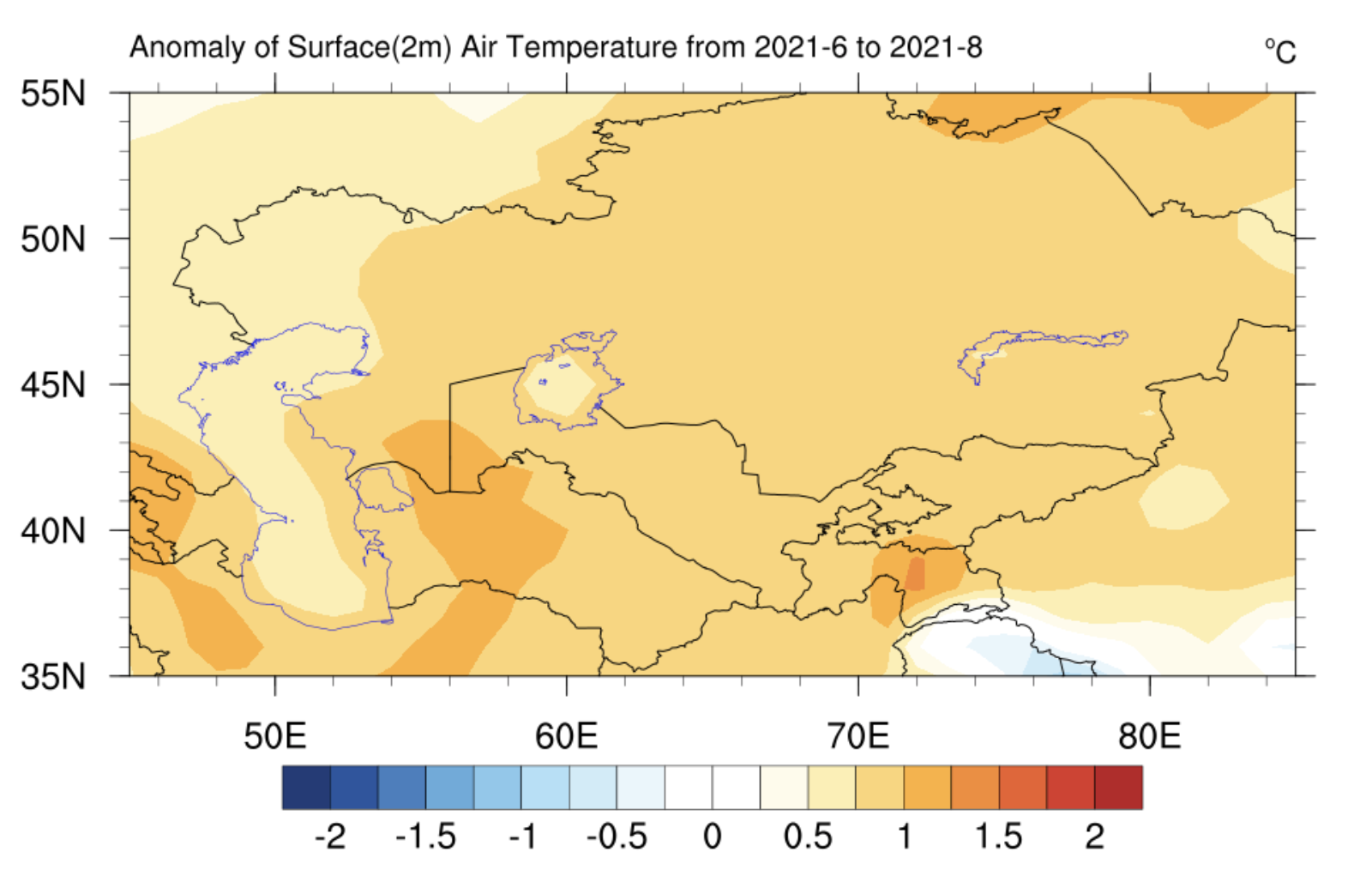The latest seasonal prediction was updated by the ANSO-MISSPAD team on May 28, 2021. The temperature is predicted to be higher than normal for about 0.5 ℃ over Central Asia. Overall, Central Asia will have less rainfall than usual. And the rainfall anomaly shows a pattern of “southern flood and northern drought”, with more rainfall in Turkmenistan and southern Uzbekistan. The prediction is based on FGOALS-f2, which is a real-time weather and sub-seasonal to seasonal (S2S) prediction system, developed by the Institute of Atmospheric Physics, Chinese Academy of Sciences (IAP/CAS). FGOALS is now a member of S2S Project of the World Weather Research Programme (WWRP) and World Climate Research Programme (WCRP).
1. Central Asia is overall drier, except for more rainfall in the southern part
The seasonal forecast was updated in May 2021. It indicates that the negative sea surface temperature (SST) anomaly in the central and eastern equatorial Pacific is turning to neutral in the summer of 2021 (June, July, and August), as the decaying phase of the La Niña episode (Figure 1).
According to the latest seasonal forecast, the Central Asian region will overall have less precipitation in the summer of 2021 (June, July, and August), mainly in Kazakhstan, Kyrgyzstan, Tajikistan, while more rainfall is predicted in Turkmenistan and southern Uzbekistan. The percentage of precipitation anomaly in south Central Asia reaches -100-200%, indicating the relief of drought climate and high risk of flash floodings.
Figure 1. The ANSO-MISSPAD seasonal prediction suggests the La Niña event in the central tropical Pacific will decay.
Figure 2. The precipitation anomaly percentage (%) predicted by ANSO MISSPAD for Summer 2021.
2. A hotter summer is predicted.
According to the ANSO MISSPAD S2S prediction system, a hotter summer is predicted in Central Asia, with a temperature anomaly of at least 0.5℃ in most regions. In Tajikistan and western Turkmenistan, the temperature anomaly reaches >1.0 ℃ higher than usual. This will tend to cause water resource shortages in Central Asia, especially the northern part.
Figure 3. The temperature anomaly percentage (℃) predicted by ANSO-MISSPAD for the Summer of 2021.
Copywriter: Ke Wei and Yao Tang
Review: Qing Bao
Picture: Lei Wang



